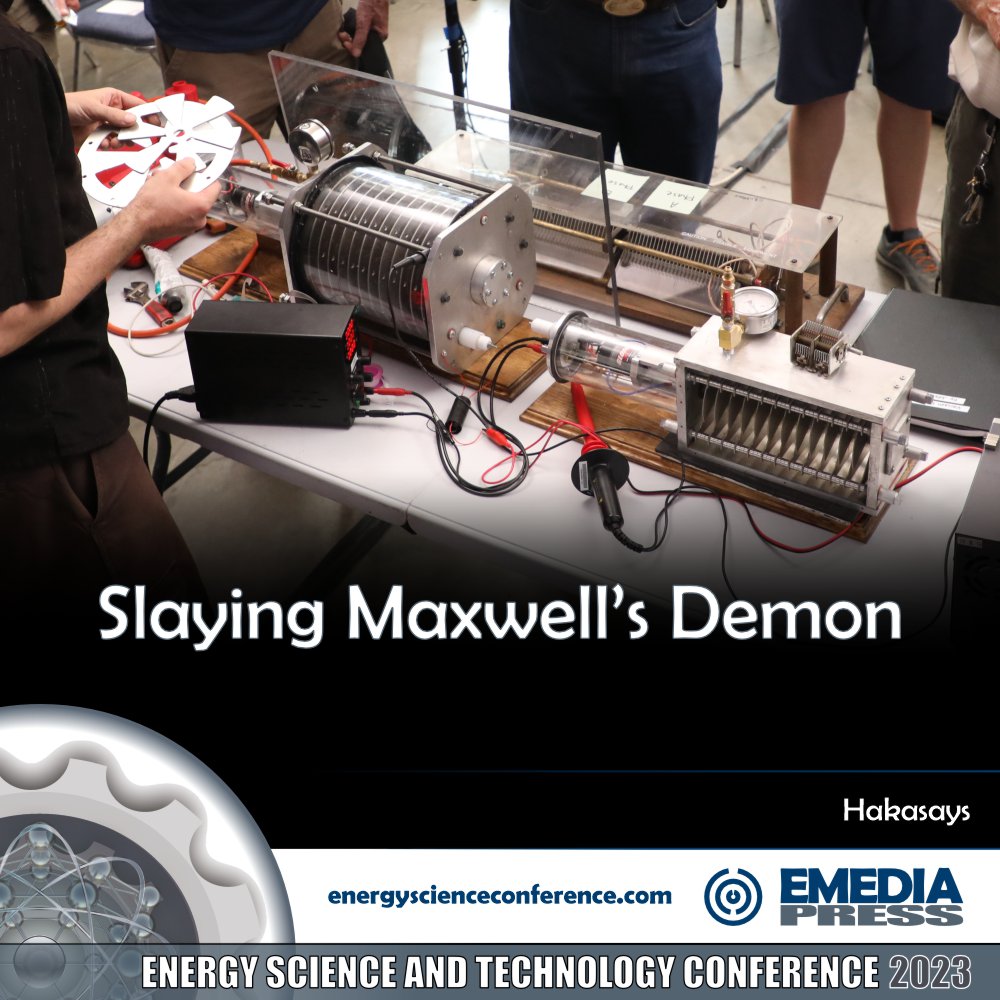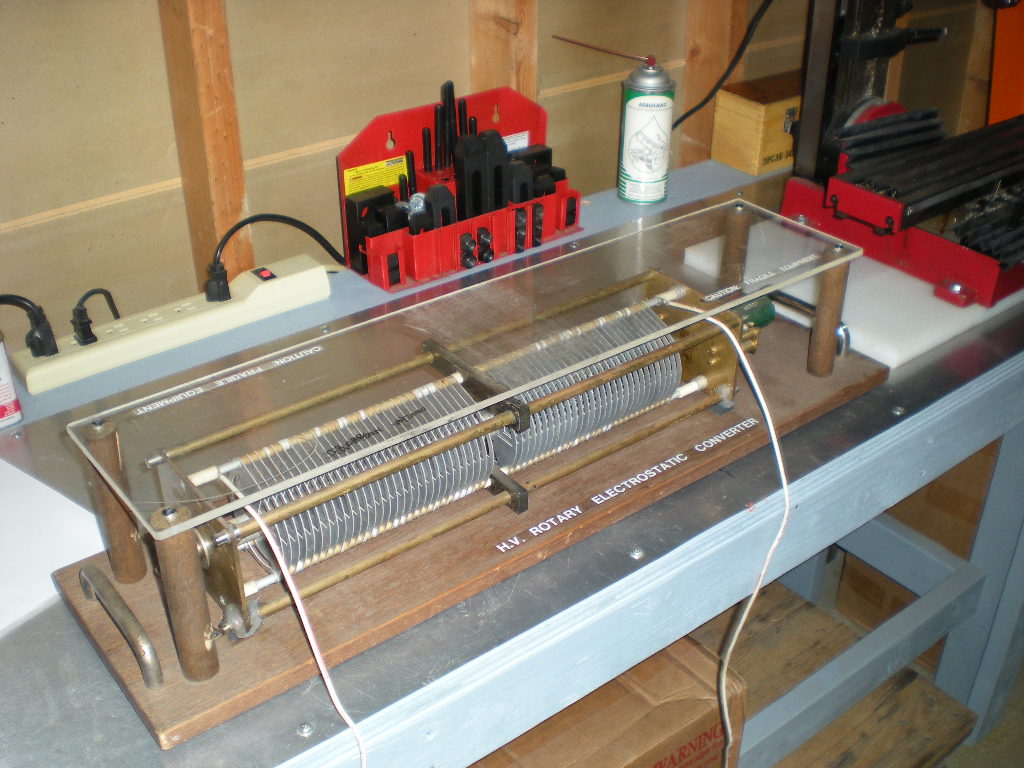The focus in this presentation is to step back and take a “bird’s-eye-view” of both the established and the fringe science and find common themes/mechanics between them. How does Lorentz Special Relativity relate to electrical engineering, and is it compatible with the works of Eric Dollard, Heaviside, and others? How can we tell if a theory is accurate, and how might we design experiments to confirm or falsify a model or claim? Are there common threads between different claimed “overunity” devices? Parametric variation is a major theme of the talk, and the demonstration(s) will be a reflection of that. A much improved ‘Carson rotary electrostatic converter’ aka Trump motor is planned for demonstration as well as other models to demonstrate key principles of fringe tech.

Slaying Maxwell’s Demon
The focus in this presentation is to step back and take a “bird’s-eye-view” of both the established and the fringe science and find common themes/mechanics between them. How does Lorentz Special Relativity relate to electrical engineering, and is it compatible with the works of Eric Dollard, Heaviside, and others? How can we tell if a theory is accurate, and how might we design experiments to c…



